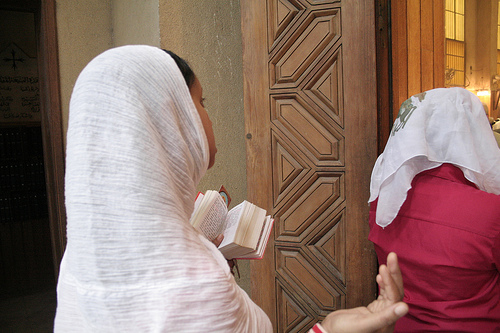 CAIRO: In October, the American Pew Forum on Religion and Public Life released its comprehensive report, “Mapping the Global Muslim Population.” The ambitious project numbers both the population and the distribution of the world’s Muslims, regionally and by country. Supposed to be the most accurate and thorough compilation of data to date, the Pew Forum intends this study to be part of a larger project on Muslim growth-rates that will continue into 2010.
CAIRO: In October, the American Pew Forum on Religion and Public Life released its comprehensive report, “Mapping the Global Muslim Population.” The ambitious project numbers both the population and the distribution of the world’s Muslims, regionally and by country. Supposed to be the most accurate and thorough compilation of data to date, the Pew Forum intends this study to be part of a larger project on Muslim growth-rates that will continue into 2010.
Although a matter of minutiae with respect to the full scope of the project, a single statistic within the study is of particular interest to some Egyptians. The report asserts that Egypt is home to roughly 78,513,000 Muslims, which it estimates to be roughly 94.6 percent of the total population. This conclusion implies that religious minorities in Egypt (Coptic Orthodox and Protestant Christians, Baha’i, agnostic, etc.) make up the remaining 5 percent.
Numbers concerning religious distribution in Egypt are notoriously dubious. The 2006 census did not document religion, leaving the art of conjecturing to non-profits and other organizations. Also, not surprisingly, the estimates of minority religious populations in Egypt vary depending upon the group asked, the math often favoring the group calculating it.
The Coptic Church and its environs regularly cite percentages higher than 10 percent for their make-up of the total population, using these figures in demands for political representation and entitlement. Their opponents contend the numbers to be much lower. It remains to be seen what change, if the any, the Pew Forum study will bring to the conversation.
The numerical discrepancy would be unproblematic if the figures were not so enmeshed in current social-political debates concerning Coptic rights and sectarianism.
On November 11, Coptic-Orthodox Bishop Besenti of Helwan and Maasara demonstrated the numbers’ social significance by adamantly defending and employing the larger figures while discussing sectarianism and representation in an interview with local reporters.
Bishop Besenti said that “we [Christians] should comprise 13 million now, and maybe no less than 15 million, but definitely not less than ten million as some people claim.” He argued that sectarian violence was tied to the construction of houses of worship and could be allayed if there were one church to every ten mosques.
An acceptance of the Pew Forum’s report would require a significant alteration in the Bishop’s figures. Since the Pew study claims that there are no more than 4.5 million non-Muslims in Egypt, a proportional ratio would look closer to one church to every 22 mosques.
The use of the 10-15 percent estimate is not limited to the issue of church construction.
Likewise, Copts United, an international organization and online news source, makes its current political demands for representation based upon the figures of 10-15 percent as can be found on their website coptsunited.com:
“(Conference Resolution 3): Allocating a proportionate and just percentage (estimated between 10-15%) of government appointed positions to Copts, to guarantee appropriate participation.
(Conference Resolution 4): Allocating a proportionate and just percentage (estimated between 10-15%) of parliamentary seats for Copts, thereby, encouraging political participation and guaranteeing adequate representation in the Electoral Bodies.”
For now, it seems that most Copts will follow Bishop Besenti’s lead, dismissing the unfavorable statistics and continuing to lobby for proportionality based upon the higher figures. The number jockeying will continue and the Pew Forum’s study has provided yet another complex piece to the multivariate puzzle that is the Egyptian religious landscape.



